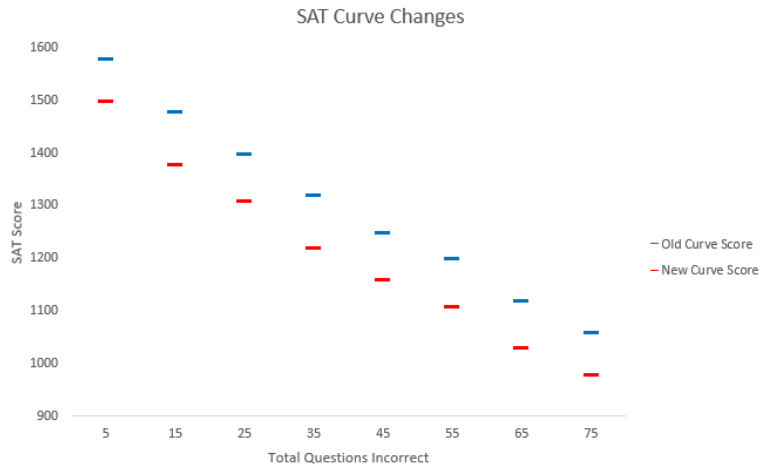Greetings from ESM! Today I’m here to discuss some recent (unannounced) changes to the SAT and its “curve”. The “curve” is a term we use to describe the process in which the SAT translates from a student's raw number of correct answers to the overall score he or she receives. Some of you may have heard of the controversy surrounding the June 2018 SAT. For those who haven’t, this test was controversial because the curve on the math section was significantly less generous than it had been on prior exams. For example, a student who missed six questions on the May 2018 SAT would’ve scored a 730 on math, but on the June 2018 six missed questions would’ve scored a 670 on math, a 60 point difference! Some fluctuations between tests is normal and expected, but this was quite drastic and had significant unexpected impacts on students’ scores. So why am I discussing this now, six months later, in 2019? Well, there have been four SATs since the June 2018 test, (In August, October, November, and December 2018), and all but the August test have had curves similar to the June exam, so it looks like the June curve is here to stay. And unfortunately, it’s not just math. Here’s a graphical illustration of the changes:

This graph shows, based on how the raw amount of questions missed, what score a student would have approximately received on each curve. For example, a student who missed five questions total would have scored approximately 1580 on the old curve, yet only 1500 on the new one. Overall, scores have been deflated by around 60-100 points on average.It looks like College Board, the company that designs and administers the SAT, decided that too many students had been scoring highly on the test and made it arbitrarily more difficult to attain those high scores in order to “smooth out” the curve.So what should current students studying for the SAT take away from this? Well, a couple things: